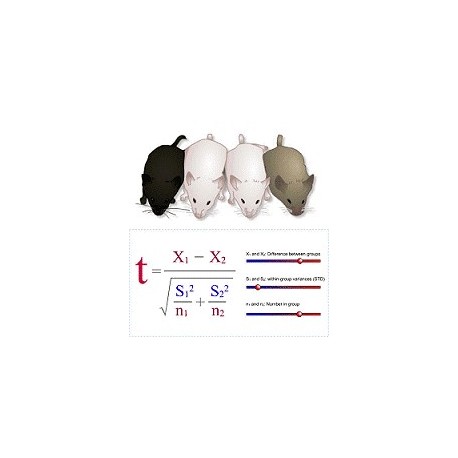No products
Prices are tax excluded
Experimental Design
SB-9
This program helps researchers, particularly those working with animals, to design more effective experiments, produce more conclusive results, improve interpretation and reduce the number of experimental animals required.
Available Next Business Day
By buying this product you can collect up to 62 loyalty points. Your cart will total 62 points that can be converted into a voucher of $9.30.
Volume discounts
| Quantity | Discount | You Save |
|---|---|---|
| 2 | 3% | Up to $37.67 |
| 3 | 5% | Up to $94.18 |


The price covers all students within a department (multi-user educational licence). Once payment has been received the software is supplied as a download. Online Previews before purchasing are available on request.
'Experimental Design’ aims to help researchers, particularly those working with animals, to design more effective experiments which will deliver more information, produce more conclusive results, improve interpretation and reduce the number of experimental animals required. It combines real life scenarios, working examples and background theory and throughout the student learns by exploration and engages in interactive practical exercises that give hands on exposure to the key concepts in experimental design. The program has been designed with the close collaboration of research scientists in industry and academia. In addition, members of the scientific community ranging from post-graduates to project leaders have evaluated the software to ensure the appropriateness of its content.
Aims: to enable the research scientist to:
- estimate the number of animals needed to attain the scientific objectives economically and effectively.
- select a suitable animal model
- avoid bias and deal with variability
- use appropriate statistical methods or more effectively consult professional statisticians
Sections exploring the key issues in experimental design are accessed from a menu.- Introduction & Aims - primes the user as to why experimental design is so critical. Engages the user with data from a simple experiment to highlight design flaws.
- Choice of Animal Model - explores the use different strains (inbred and outbred stock) and covers the various types of animal model (predictive, explanatory, exploratory).
- The Experimental Unit - uses interactive examples to explain the critical nature of the experimental unit and it's importance.
- Eliminating Bias - covers techniques you can employ to remove systematic differences between treatment groups and ensure your experiments are not biased. Again interactive examples are used
- Applying Valid Statistics - covers the application of valid statistical tests to your data, explores the definition of hypotheses, choices of statistical tests, and interpretation of P.
- Improving Precision - making experiments more precise so that we can detect treatment differences. Ways of achieving this - ensuring uniformity, use of blocking, using power analysis and the resource equation method.
- Increasing the Range of Applicability - using your resources effectively to enable you to interpret your findings over a wider range e.g. different treatments, different strains, sexes, sizes. Use of multi-factorial design.
- Planning and Organising - key issues in designing and analysing effective (simple) experiments.
- Self-Assessment Activity - series of case studies and true/false questions with feedback to self-assess your understanding.
- Software Tools & References - where to get further information.
Recommended System Requirements: Microsoft Windows XP (32 bit), Windows Server 2003 (32-bit), Windows Server 2008 (32 bit), Windows Vista (32 bit), Windows 7 (32 bit and 64 bit), Windows 8, 2.33GHz or faster x86-compatible processor, or Intel Atom 1.6GHz or faster processor for netbooks, 128MB of RAM (1GB of RAM recommended for netbooks); 128MB of graphics memory, Internet Explorer 7.0 or later, Mozilla Firefox 4.0 or later, Google Chrome, Safari 5.0 or later, or Opera 11.














